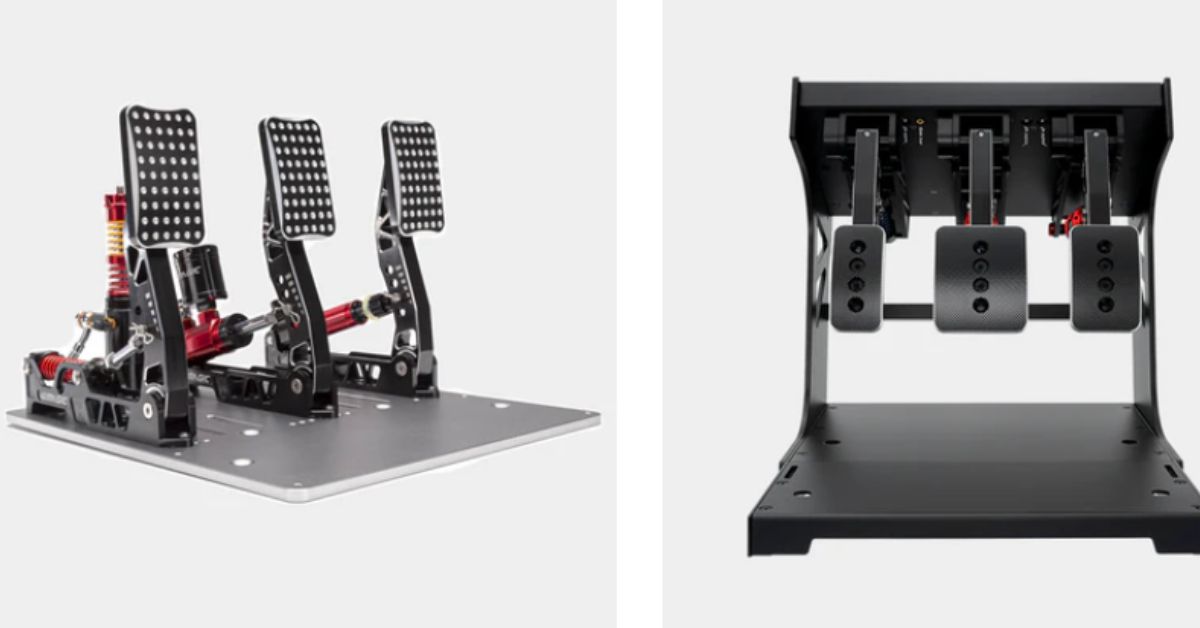When constructing the ultimate driving simulation rig, enthusiasts often allocate considerable attention to the steering wheel and graphics capabilities. However, amidst the excitement of these elements, one crucial hardware component that sometimes gets sidelined is the pedals.
Yet, pedals serve as the unsung heroes of the racing experience, offering a level of immersion and control that simply can’t be achieved with a controller alone. So, delve deeper into why pedals like the simagic pedals are indispensable hardware for any driving simulation setup.
Precision Control
The primary function of this equipment in a driving simulation rig is to deliver precision control over acceleration, braking, and sometimes clutch engagement. Unlike the binary nature of pressing buttons on a controller, utilising them enables a more nuanced and realistic driving experience. Players can finely adjust their throttle and brake inputs through analog input, resulting in smoother and more accurate dynamics. This precision is crucial for mastering different conditions, such as wet or uneven surfaces, where subtle adjustments can mean the difference amidst a perfect lap and a crash.
Immersive Feedback
Pedals like the simagic pedals also contribute significantly to the immersive feedback of a driving simulation rig. Users can feel the resistance and gradual increase in speed when depressing the accelerator, mirroring the sensation of pressing down on an actual gas one. Similarly, when applying the brakes, the resistance intensifies, providing a tactile sense of deceleration. This tactile feedback tends to add another layer of realism to the simulation, fostering a stronger connection between the player and the virtual car. The feedback helps understand the car’s behaviour and limits, which is essential for pushing the car to its boundaries without losing control.
Muscle Memory Development
Engaging with pedals aids in developing muscle memory, a critical aspect of mastering the art of racing. As players spend more time with their simulation rig, they naturally begin to internalise the nuances of control in various scenarios. This muscle memory translates into improved consistency and lap times, as drivers can instinctively adjust their inputs based on track conditions and vehicle dynamics. Practising with the equipment allows drivers to develop a natural rhythm and feel for the car, making their reactions more intuitive and less reliant on conscious thought. This can be particularly beneficial in competitive racing, where split-second decisions make all the difference.
Enhanced Realism
A fundamental allure of driving simulation is its ability to replicate the real-world driving experience. Pedals play a significant role in achieving this realism. By accurately simulating the sensation of driving a physical car, complete with the weight transfer during braking and acceleration, this equipment contributes to a more authentic and immersive experience. Whether navigating tight corners or executing precise braking manoeuvres, the realism provided by the equipment heightens the thrill of the virtual race. These sets often include features such as adjustable stiffness and travel, allowing users to mimic the feel of different types of vehicles, from a light, responsive sports car to a heavy, powerful truck.
Customisation Options
Most modern pedals offer many customisation options, enabling users to tailor their setup to their preferences. Whether adjusting sensitivity, swapping out faces for improved grip, or fine-tuning pedal travel, these customisation options can significantly enhance the rig’s comfort and performance. Furthermore, some pedals boast advanced features like adjustable spacing and angle, catering to users with specific ergonomic requirements. Customisation improves comfort and ensures that the pedal setup can evolve with the driver’s skills and preferences, offering a personalised and adaptable driving experience.
While steering wheels and graphics undeniably hold significance in a driving simulation rig, pedals warrant equal recognition for their pivotal role in enhancing the overall experience. From delivering precision control and immersive feedback to fostering muscle memory development and adding realism, pedals are an indispensable piece of hardware for any dedicated racing enthusiast. With their ability to elevate the driving experience to new heights, this equipment should not be underestimated when constructing your ultimate simulation setup.










